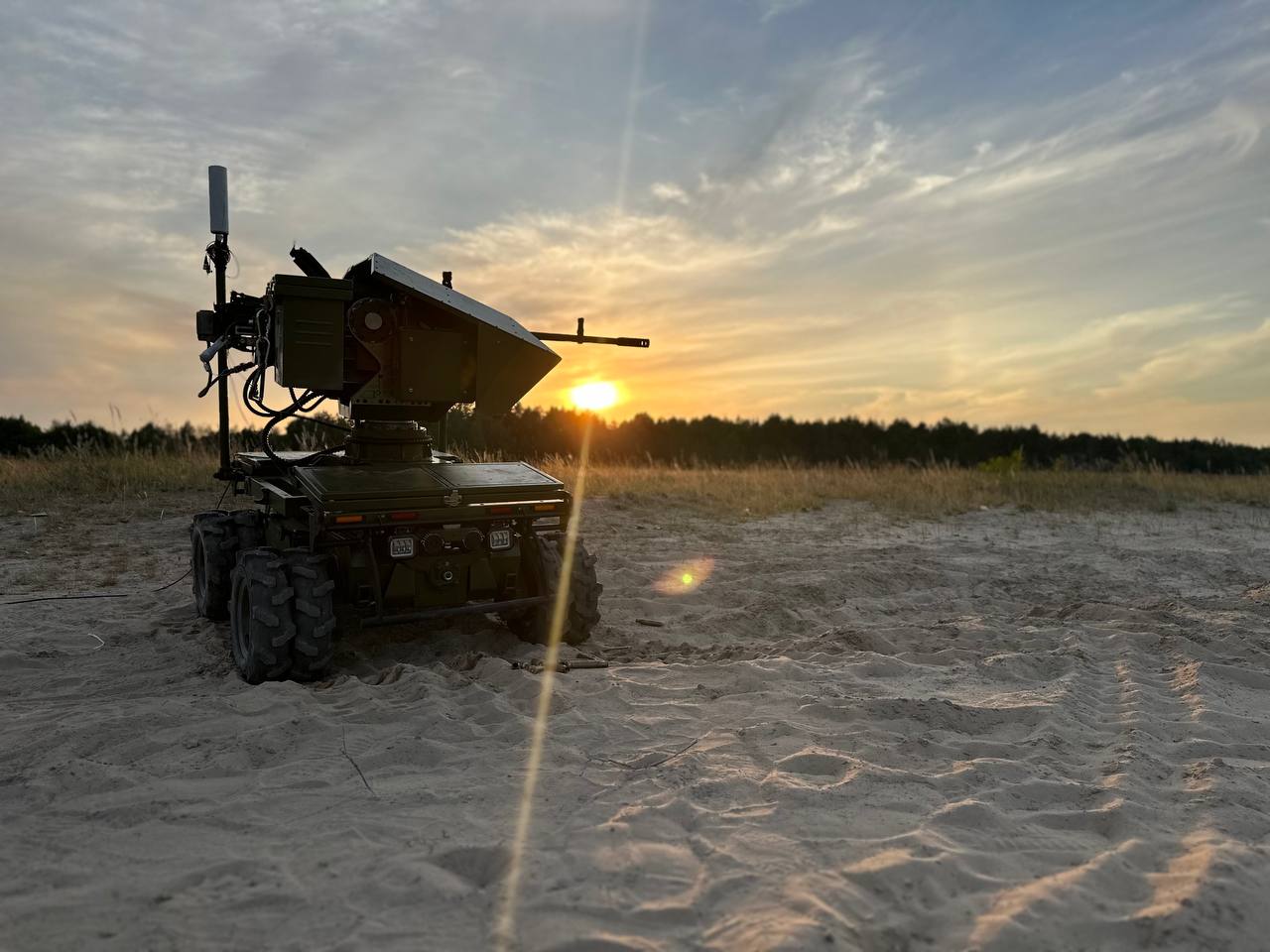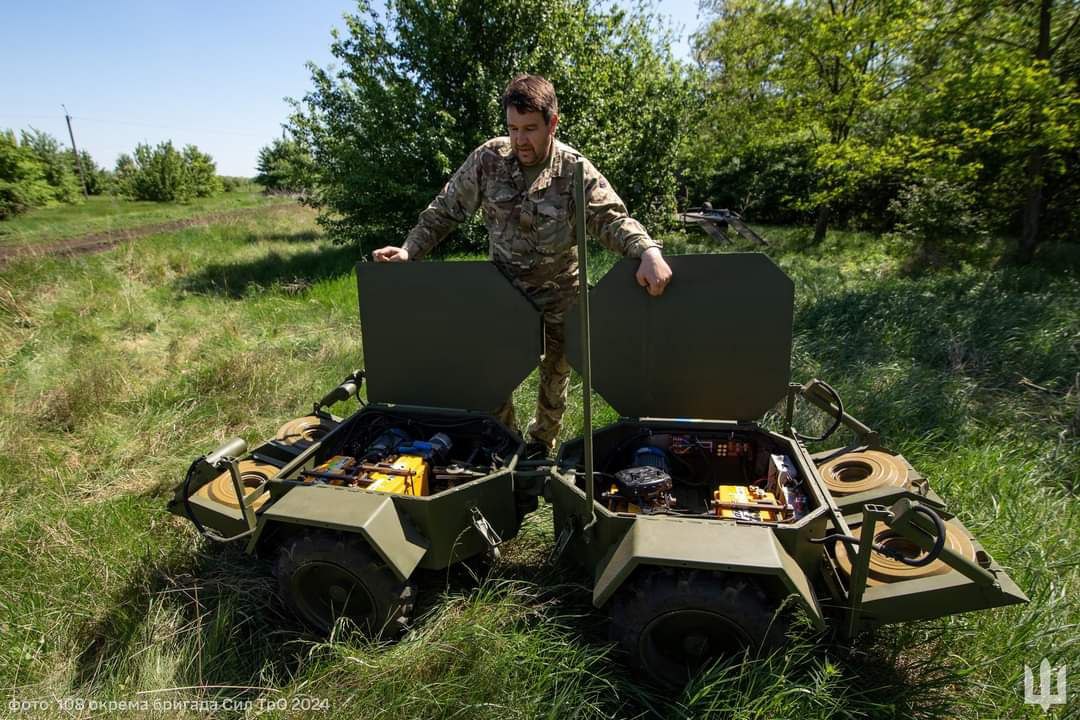
Ground drones in Ukraine are rapidly becoming a core component of combat innovation. These robotic platforms play a vital role in transforming warfare, especially under conditions where artillery dominance and positional standoffs define the battlefield. As the Armed Forces of Ukraine test autonomous unmanned ground vehicles (UGVs) on the front line, they pioneer the integration of artificial intelligence in war.
Faced with a full-scale invasion, Ukraine has become a living laboratory for combat innovation. While aerial drones have become familiar players in the skies, ground drones are only beginning to establish their place in military tactics. They are used to delivering ammunition, conduct reconnaissance, evacuate the wounded, and sometimes participate directly in assaults.
However, the road to a technological breakthrough has proven more complex than expected. Analysts and military engineers face several critical challenges, limiting the mass deployment of ground drones.
The battlefield is not a controlled training ground with predictable terrain, but a chaotic, shifting, and often hostile environment for technology. Unlike aerial drones, ground systems cannot bypass obstacles—they must confront them physically. Modern ground drones struggle with mud, sand, debris, shrubbery, and ice. They often get stuck, lose maneuverability, and become easy targets.

Improving mobility is one of the primary engineering objectives. As noted by The Wall Street Journal, it’s not just about upgrading suspensions but creating adaptive propulsion systems with hybrid mobility—capable of changing movement modes depending on terrain type. This includes wheel-track hybrid configurations, partially elevating platforms, stabilizing mechanisms, or even biomechanical prototypes that mimic animals. But technical adaptation alone is not enough.
Another front is electronic warfare. The enemy actively jams signals and blocks navigation and control. For drones to survive on the battlefield, they need encrypted communication channels, inertial navigation systems, partial autonomy, and sometimes even wired control. This requires an entirely new movement logic—including autonomous terrain adaptation and navigation without GPS.
Today, the term “unmanned” is conditional. Most ground drones still require constant operator supervision. Yet modern warfare demands faster decision-making—often in real-time and sometimes in communication blackouts.
What once seemed futuristic is now under development. Ukrainian engineers are testing drones capable of basic autonomous decision-making. The idea is simple: if a machine loses contact with the operator, it should not freeze—it should follow a pre-programmed course of action: deliver cargo, return, or evade detection.
As Militarnyi notes, artificial intelligence in warfare allows drones to make tactical decisions: avoid obstacles, reroute, identify targets, or return to base when connection is lost. This is no longer sci-fi—it is being tested on the front lines. But to make it work requires computer vision algorithms, neural networks, and machine learning—fields demanding time, talent, and significant resources.
Integrating AI into ground drones enables them to recognize threats, plot routes, and avoid hazards. However, each such module costs tens of thousands of dollars. For a military that needs thousands of such machines, that cost is critical.
Another breakthrough direction is swarm technology. The concept is to develop collective “intelligence” for a group of drones. Such swarms can conduct synchronized assaults, block escape routes, and provide logistical support.
On land, this is much harder than in the air. Ground drones must not only coordinate but avoid collisions, read terrain, and communicate under conditions of electronic warfare. Still, the concept of a “mechanized flock” is a central focus for many Ukrainian startups and defense projects. And its potential is vast.
Behind every innovation lies the question of cost. A modern ground drone can cost tens of thousands of dollars. In battlefield conditions, where losses are inevitable, this limits scalability.
Currently, what frontline troops value most is not sophistication but reliability. Simple, cheaply manufactured platforms that can deliver a grenade or extract a wounded soldier are sometimes more valuable than complex, expensive prototypes. In many units, kamikaze drones are made from repurposed household electronics—this is the reality of wartime improvisation.
Striking the balance between innovation and simplicity is the sector’s biggest challenge. Engineers must understand that their drones will end up in the mud outside Bakhmut, not a lab.

Reducing component costs, using off-the-shelf parts, modular design, and local production are key factors in making frontline drones more effective and accessible. Ukraine already offers examples proving the success of this approach:
These cases demonstrate that combining modularity, accessible materials, and local manufacturing can result in efficient, cost-effective ground drones made in Ukraine.
The key lies in cheaper components, standard parts, modular design, and local assembly. Fast field repair without sending drones to the rear is also essential.
No standards—no drone army. As of now, each manufacturer produces their ground drones for the Armed Forces of Ukraine (AFU) without unified requirements, making integration extremely difficult.
Without this, the large-scale dronization of the AFU remains only a vision.

Another bottleneck is the lack of a regulatory framework. The army lacks consistent standards for types of ground drones, their roles, operator interaction, and safety protocols. This stalls technological scalability. Manufacturers act independently, creating incompatible systems that are hard to integrate into a unified operational structure.
What’s needed is a national program—not just financial but institutional. One that builds standards, certification systems, defense innovation incubators, and long-term procurement for vetted solutions.
Ukraine is effectively creating a new philosophy of war—techno-centric, automated, and lower in human casualties. Ground drones and robotic platforms are not just tools—they are symbols of this transformation.
The technologies Ukraine is testing at the front today may shape the modernization of land forces in many countries tomorrow—but only if this technology receives not only support but a clear development strategy.
Despite all the challenges—from mud to electronic warfare, from high costs to legal gaps—this development continues. If government, industry, military, and science can converge at this point, the front line will gain not just new machines but a new logic of warfare. One where humans are no longer the first target—and might just have a better chance of survival.
Підтримати нас можна через:
Приват: 5169 3351 0164 7408
PayPal - paypal@mil.in.ua
Стати нашим патроном за лінком ⬇
Subscribe to our newsletter
or on ours Telegram
Thank you!!
You are subscribed to our newsletter